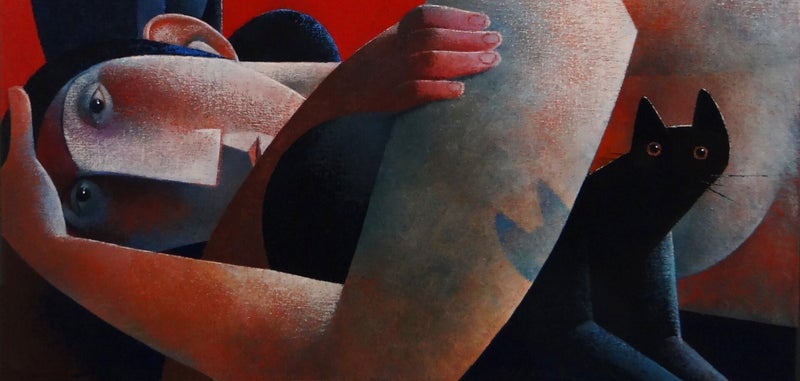
REFLECTION
(by Frans Duister, Art historian, Amsterdam)
In the hands of Peter Harskamp, the painter's formulation and grouping of thoughts and emotions into expressive compositions repeatedly make a statement and through this he visualises his relation to life. He approaches his work with consequence and virtually removes the so-called partition between figurative and abstract. This, because for him these differences in life do not exist. Through his conception within his paintings he makes it evident and convinces us that such a partition is purely artificial.
Peter Harskamp is not a realist in the familiar sense of the word. He does not try to bring art and nature closer together. The first steps taken in art, such as previously presumed, was to imitate nature. This is, strictly speaking, a flaw in the evaluation of the purpose of art. An artist like Harskamp works from art within itself. He tries to visualise that which asks a question. With Peter Harskamp the familiar elements are truly so totally present with such strength that one sees something being created in a new perception. Those who hear him talk about his work are listening to good news. One talks about the perfecting of the adventitious and the shunning of formalities.
We do not see what we think there is to see.
The space that Peter Harskamp creates for his enormous means of imagery is one that points to nothing, so that the danger of anecdotes is almost non-existent. The simplicity of the compo-sitions is in reality, the uniting of a universal human feeling for terrestrial, beauty, balance, silence, freedom and gentleness.
Harskamp places in his images that wich others dare not to dream, so that we must stop and think twice about it. Motivated by a world within arm's reach, filtered out of the direct surroundings and with a perception like that of the small fables of life that have great meaning. These feelings can be traced back into each of his paintings. They remain consequent through the specific and inimitable technique that he has made is own. Each painting is carefully registered. The many nuances of colour do little to reduce their greatness in size, but on the contrary, make them all the more extraordinary.
Wherever his works are exhibited there automatically develops a place filled with human pleasure and a feeling for the necessity of life. A vagueness becomes defined, omnipresence, appealing three dimensionality, and unification of spaciousness. If this style should ever become contaminated by non-believers, then through this free play of so many different components ("man's mind works like a sieve: things that are considered important remain, the rest falls through") Peter Harskamp has rescued it from condemnation and brought it openly into the public again.
Beauty is in the eye of the beholder.